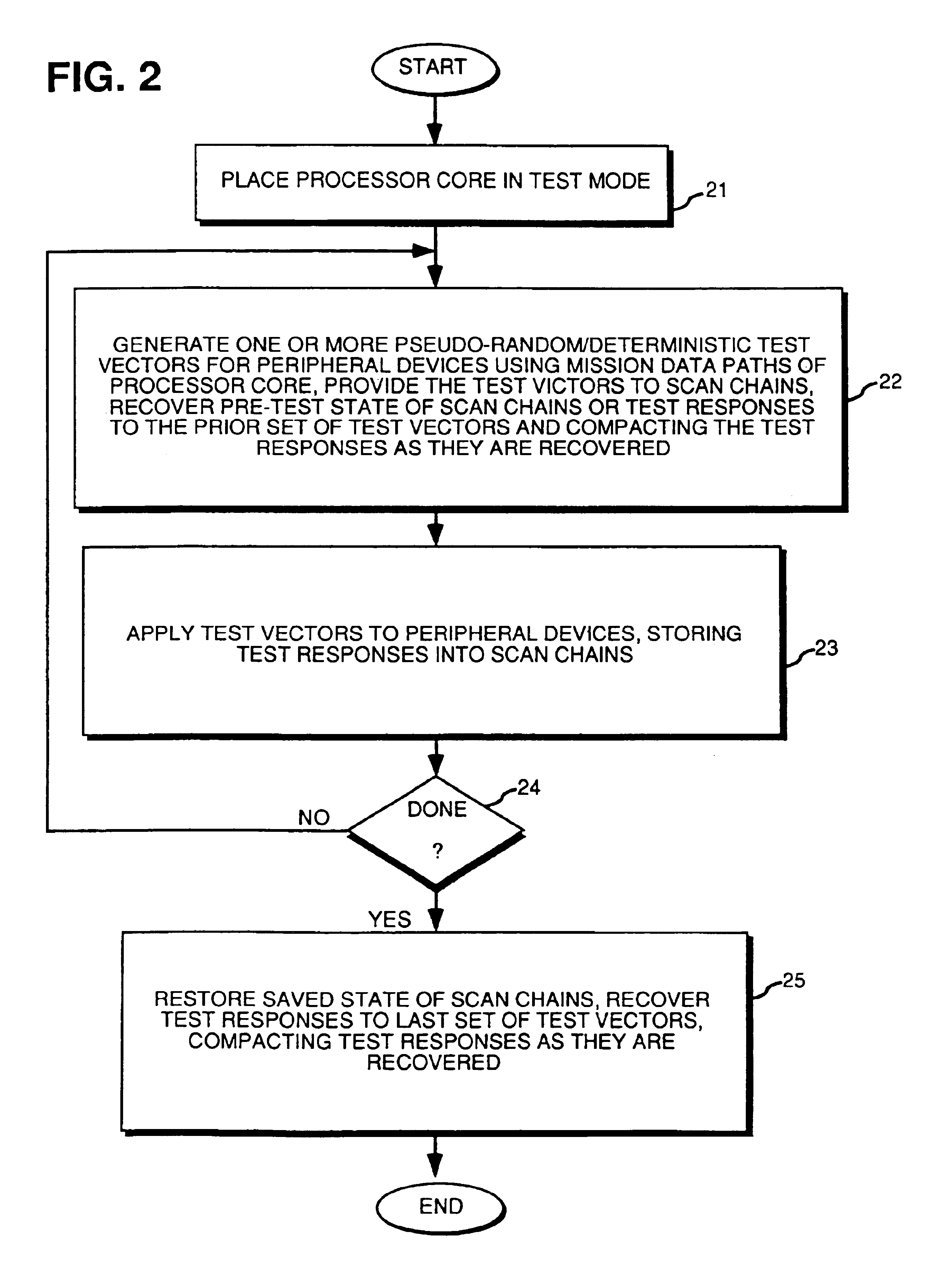Arithmetic built-in self-test of multiple scan-based integrated circuits
a built-in, integrated circuit technology, applied in error detection/correction, emergency protective circuit arrangements, instruments, etc., can solve problems such as excessive delays, increase latency, and compromise of ic's area and performance, and achieve the effect of reducing the impact of an error compensation phenomenon
- Summary
- Abstract
- Description
- Claims
- Application Information
AI Technical Summary
Benefits of technology
Problems solved by technology
Method used
Image
Examples
Embodiment Construction
[0028]In the following description, various aspects of the present invention will be described. However, it will be apparent to those skilled in the art that the present invention may be practiced with only some or all aspects of the present invention. For purposes of explanation, specific numbers, materials and configurations are set forth in order to provide a thorough understanding of the present invention. However, it will also be apparent to one skilled in the art that the present invention may be practiced without the specific details. In other instances, well known features are omitted or simplified for clarity.
[0029]Parts of the description will be presented in terms of operations performed inside an integrated circuit with an embedded processor core and peripheral devices, using terms such as data, bits, values, numbers and the like, consistent with the manner commonly employed by those skilled in the art to convey the substance of their work to others skilled in the art. A...
PUM
 Login to View More
Login to View More Abstract
Description
Claims
Application Information
 Login to View More
Login to View More - R&D
- Intellectual Property
- Life Sciences
- Materials
- Tech Scout
- Unparalleled Data Quality
- Higher Quality Content
- 60% Fewer Hallucinations
Browse by: Latest US Patents, China's latest patents, Technical Efficacy Thesaurus, Application Domain, Technology Topic, Popular Technical Reports.
© 2025 PatSnap. All rights reserved.Legal|Privacy policy|Modern Slavery Act Transparency Statement|Sitemap|About US| Contact US: help@patsnap.com



